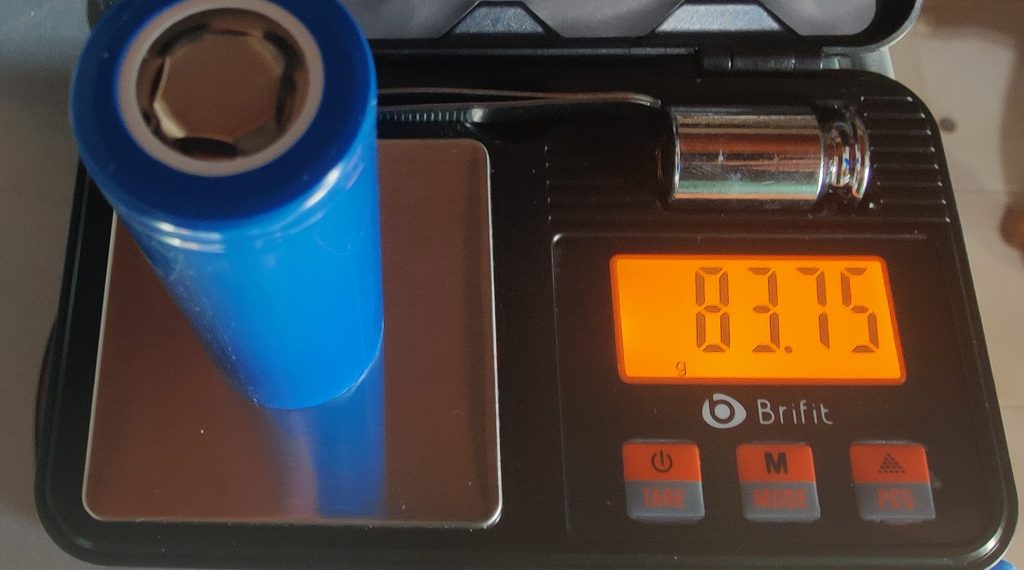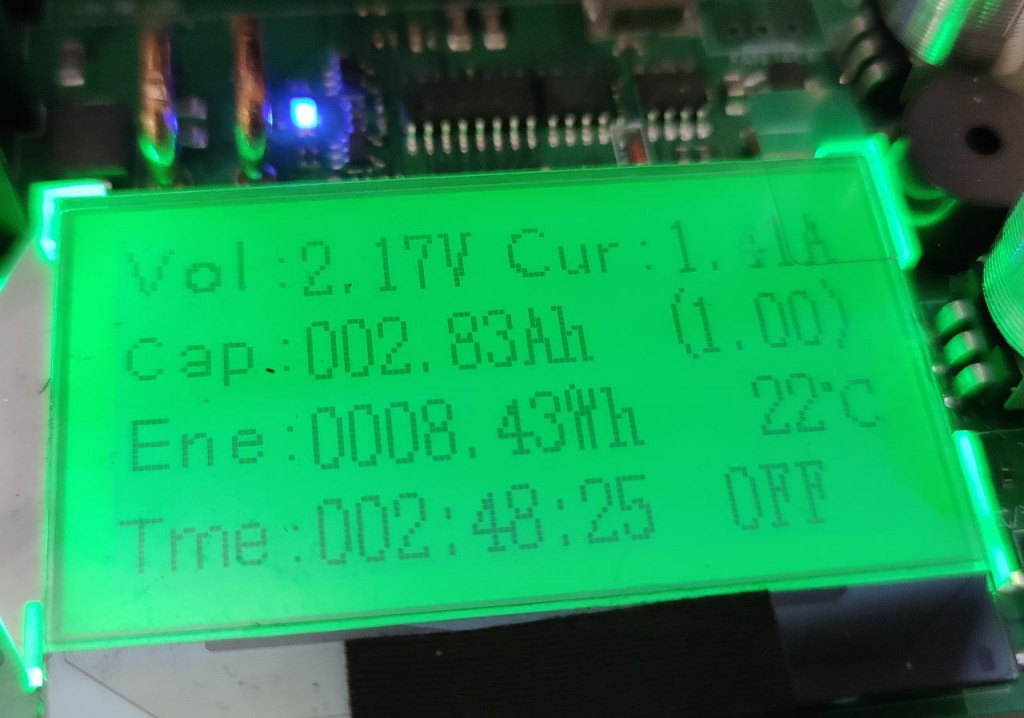Introduction
Sodium Ion batteries are not a new kind of batteries, but they have been partially developed before year 2000 and then since lithium had higher performance and at the time cost was lower, their development stopped.
Nowadays since lithium is available only in certain countries and its cost is increasing rapidly due to the big demand of electric cars, more effort has been put to finish Na-Ion development to the point we can have something that hopefully won’t blow up when used and with decent performance.
Sourcing Na-Ion cells
At the time of writing, they can be mainly sourced in low quantities only in China on Aliexpress. Most of them are from a manufacturer named “HAKADI”.
I will be testing 26700 3500 mAh ones.
Shipment and delivery cell state
The cells arrived packaged individually with white paper boxes, they read 2.56V, and around 14 mOhms of internal resistance

Each cell weighs around 83.5 grams

With that cell weight compared to Lifepo4 , we have around 10% less energy density.
Test charging at ~0.3C (1A) from delivery SoC
Charging from delivery state of charge required 10.045 Wh ( not accounting minimal but present cable loss ) and 2900 mAh , charge has been stopped at 0.17A ( less than 1/10 C ), at 4.1V.
Also during charging i’ve measured temperature with thermal camera, there was less than 2 C° difference from ambient, and that small value could have been simply reflection from myself, so charge efficiency is very high like in Lithium iron Phosphate.

One characteristic that is immediately evident is that the charge curve is not like lifepo4 where you have almost flat curve at around 3.2V , but instead it linearly ramped from 2.70V at start of charge to 4.10V.
Discharge test at ~0.3C (1A)
Coming soon next days , i will also check resting voltage of fully charged cell before commencing discharge test.
Discharge test has been done, not perfectly because of a problem with active load, so it has been done in two phases


So total capacity measured is 3.2 Ah versus 3.5 Ah claimed by the seller, considering cell charge has been stopped at 0.17A , it is quite close to what seller declared.
Coming days i’ll do another test charging it from 0% back to 100% and see how much Ah will take.